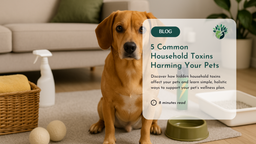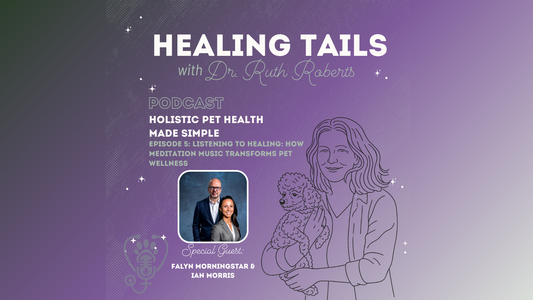How to introduce a dog to a cat? That's the question many of my clients ask me, and in this article, I’ll walk you through the steps to make that introduction as smooth as possible. Introducing a dog to a cat can be a careful process due to the distinct ways they communicate. For example, while a wagging tail in a Golden Retriever signals playfulness, a cat's swishing tail usually means irritation. Misinterpretations of these signals can lead to an unfriendly encounter, with the dog possibly getting a nose swat from an annoyed cat. However, with patience and a thoughtful approach, many cats and dogs learn to coexist and even form bonds, sometimes playing and napping together.
Do Dogs Hate Cats? Myth or Reality?
Dogs and cats seem to be divided by an unwritten line. The concept that dogs loathe cats, or vice versa, is so widespread that it's virtually a cliché. Is there any truth to it, or is it simply another dog legend? Although cats and dogs are not natural adversaries, there are several behavioral differences that can cause them to clash. Prey drive is the one that generates the most problems when it comes to peaceful interspecies relationships. Even toy breeds maintain some of the hunting instincts that aided their wild forefathers. This is why dogs, whether chasing a ball, a squirrel, or a house cat, have a natural desire to chase moving objects. It's simple to see how relationships can swiftly disintegrate when many cats flee when they see a dog. Not because dogs despise cats, but because a fast-moving feline awakens a strong, natural instinct that requires training and socialization to overcome.
Introducing a Dog to a Cat for the First Time
When introducing a dog to a cat for the first time, preparation and a controlled environment are key. Begin by selecting a neutral, quiet space in your home where both animals can feel secure. Ensure both pets are calm—after exercise or play is often ideal, as it helps minimize excess energy or anxiety. Have your dog on a leash and allow your cat to roam freely, giving them a sense of control and the ability to approach the dog at their own pace or keep their distance if they feel unsure. Starting introductions when they’re both relaxed can set a positive tone for future interactions.

Pay close attention to each animal's body language during this initial meeting. For cats, pinned-back ears, a swishing tail, or a crouched stance may signal nervousness or defensiveness. Dogs may exhibit intense focus, stiff posture, or whining, which can indicate excitement or heightened arousal. To ensure a positive experience, keep the initial interaction brief—just 5-10 minutes—and reward calm, friendly behavior with treats or gentle praise. Over time, gradually lengthen these interactions, ensuring that each one ends on a calm note. Short, positive introductions allow both pets to adjust to each other's presence without feeling overwhelmed.
If either pet shows signs of stress or aggression, separate them calmly and give them more time before the next meeting. Remember, it may take several short interactions over a period of days or weeks for your dog and cat to grow comfortable with each other. By taking a slow and steady approach, you help build a foundation for a peaceful relationship, making it easier for your pets to eventually accept each other as companions. With patience, persistence, and careful management, your dog and cat can learn to coexist, and they may even become close friends over time.
How Long Does It Take for a Cat to Get Used to a Dog?
If you are getting a new cat, Make sure your dog isn't waiting at the door when you bring your new cat home, since your cat will need time to recover from the travel time and adjust to its new surroundings. This may take longer depending on how confident your cat is. Your cat and dog should be kept apart during this time. Keep your cat separate room from your dog. You want to make sure that your cat has access to food, clean water, and a litter box in the room.
- 'Cats feel protected in lofty areas or under the bed,' says one expert.
- 'Cats are very scent-oriented, so new furniture or a new carpet can make them feel nervous.'
- Owner anxiety frequently leads to cat nervousness, so control your speech and body language.
- 'Your pet isn't hiding or spraying in the house because she dislikes you,' don't take it personally.
- Use a pheromone spray or a plug-in diffuser.
- Consider taking specially prepared nutritional supplements, which can be obtained through your veterinarian and are a natural way to help relieve stress.
Keeping Your Dogs and Cats Calm During Introductions
A peaceful environment reduces anxiety for both pets, which is crucial for a positive start. Introducing them gradually—starting with scent exchanges and progressing to supervised meetings—allows them to adjust to each other's presence without feeling threatened. For added peace of mind and to ensure that your pet’s stress is managed holistically, try either the Calm Your Pet Bundle or Serenity & Calm Support Bundle. These bundles are designed for long-term wellness and offer a safe, effective way to reduce anxiety naturally, supporting a positive introduction between your dog and cat.

The Calm Your Pet Bundle offers drug-free support for managing pet stress and anxiety naturally. With a combination of ergonomic supplements and advanced therapeutic tools, this bundle helps pets stay calm and balanced.
Key Benefits:
- Immediate Anxiety Relief: The PetsPEMF pad offers cordless, drug-free pain and anxiety relief, controlled via a convenient phone app. Simply place the pad where your pet rests to provide a calming environment during initial introductions.
- Gut-Brain Axis Support: Fidospore probiotics in the bundle help maintain a balanced gut, which is directly connected to mental wellness, reducing cognitive and behavioral issues.
- Natural Stress Calming: Ergothionine and Mushroom Relax help calm your pet’s nervous system, reducing stress and promoting relaxation during this transition.
For ongoing peace of mind and emotional support, the Serenity & Calm Support Bundle provides a holistic solution for managing anxiety and cognitive health. This bundle combines powerful ingredients like Ergothionine, Reishi, Mushroom Relax, and Omega-Pawz, creating a natural, non-drug approach to calm your pet's behavior and support mental health.

Key Benefits:
- Anti-Inflammatory & Cognitive Support: Omega-3 fatty acids in Omega-Pawz promote brain health and reduce inflammation, contributing to sharper cognitive function and a calmer demeanor.
- Natural Stress Relief: Reishi and Mushroom Relax reduce stress levels, helping your pet feel calm and collected.
- Promotes Gut Health: Fidospore probiotics improve gut health, which plays a vital role in mental calmness and reducing anxiety.
How to Deal with an Anxious Cat or Dog?
When introducing a dog to a cat, anxiety can play a significant role in shaping their reactions and overall experience. Both cats and dogs are naturally territorial and may feel threatened when a new animal enters their space. Anxiety often leads to behaviors like barking, growling, hiding, or even aggression. For instance, a dog might feel overwhelmed by a cat’s quick movements, while a cat may become anxious around a curious, sniffing dog.
Creating a calm, relaxed environment can make a world of difference during this introduction process. Addressing anxiety in both pets before their first meeting helps reduce stress and promotes a smoother interaction. Tools like the PEMF Mat from PetsPEMF or Calming Oil can support relaxation, giving each animal a chance to approach introductions with more ease and less tension. This allows the dog and cat to gradually build trust, making it easier for them to coexist peacefully and, over time, even form a positive bond.
Final Thought
Introducing a cat and dog to each other can be a rewarding experience when approached with patience and preparation. By focusing on gradual, positive interactions and addressing both pets' unique needs, you can help foster a peaceful and even affectionate relationship between them. With a calm environment, controlled meetings, and a little support from natural calming supplements, your pets can adjust to each other and live harmoniously.
Practical Tips for a Smooth Introduction
To ensure a peaceful and successful introduction between your cat and dog, it's essential to plan each step carefully. Creating a safe and gradual approach helps prevent stress and allows both pets to feel comfortable as they become familiar with each other. Here are some practical tips for a smooth introduction:
- Start with Scent Exchange: Begin by swapping bedding or blankets between your cat and dog before they meet. This allows them to familiarize themselves with each other's scent in a non-threatening way.
- Controlled First Meeting: When it’s time for their first meeting, keep the dog leashed and allow them to sniff the air from a safe distance. Pay close attention to your cat’s body language to gauge their comfort level.
- Gradual Progression: Start with brief, supervised sessions, and slowly extend the time they spend together as they grow more at ease around each other.
















